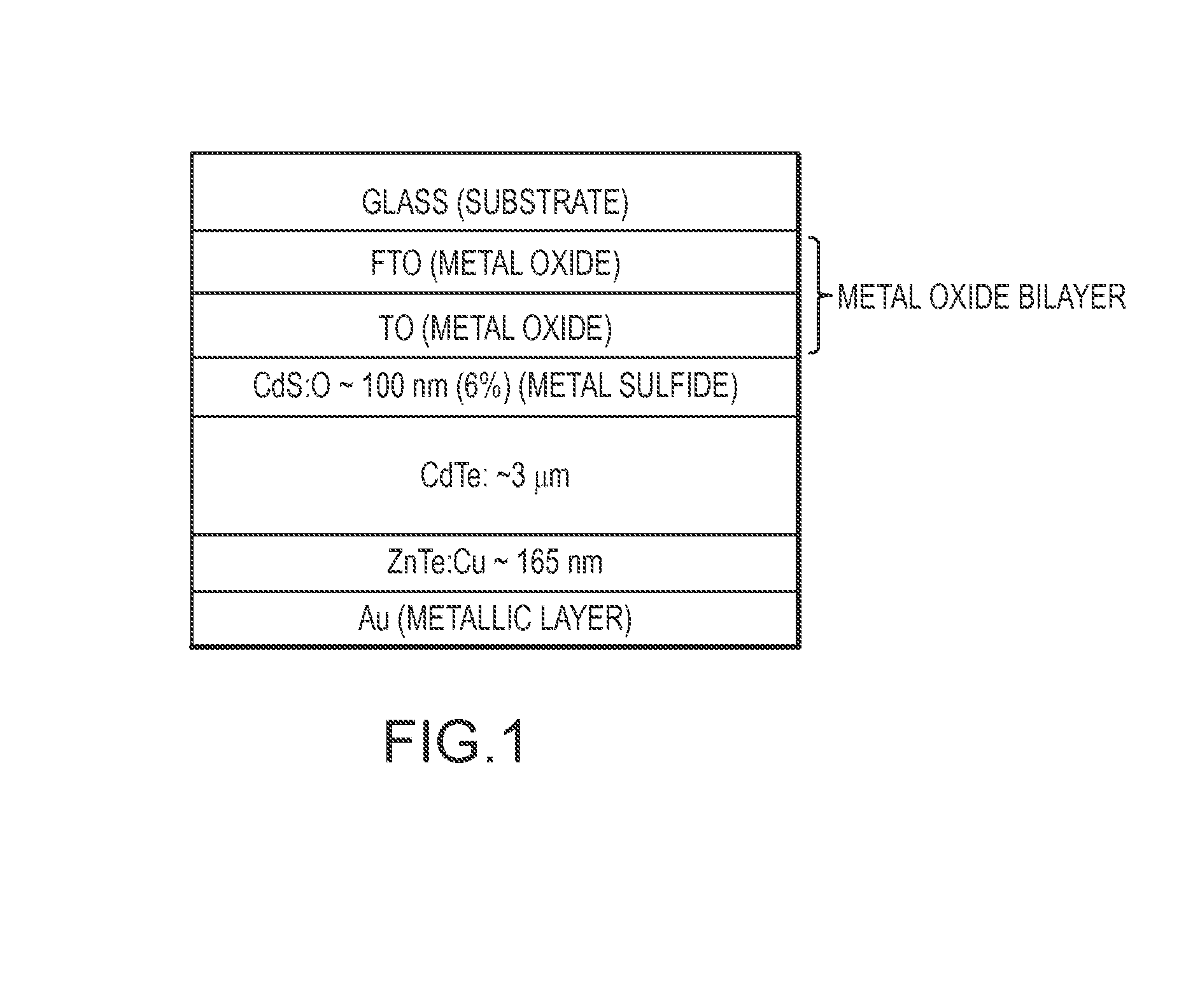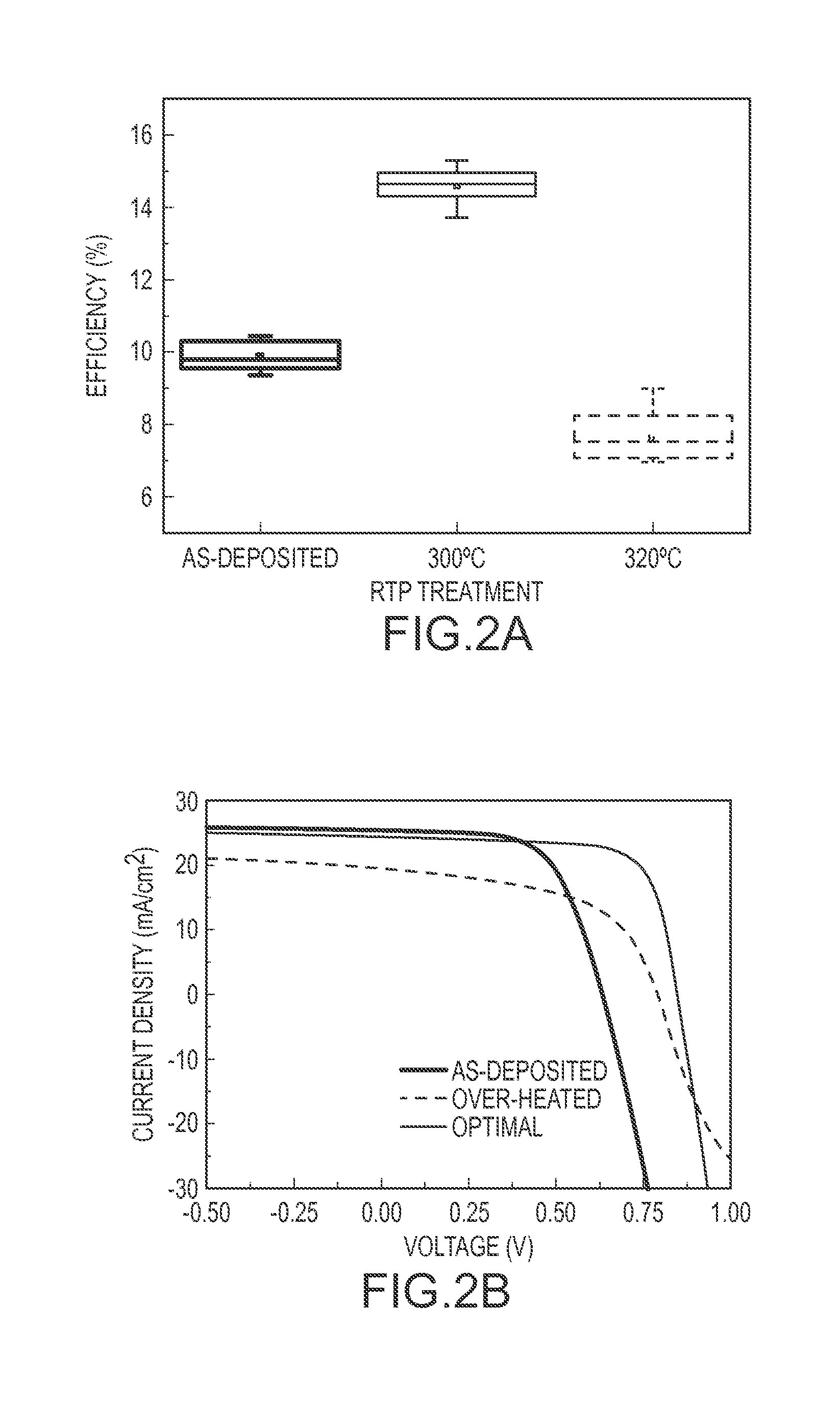Rapid thermal processing of back contacts for cdte solar cells
a solar cell and back contact technology, applied in the field of rapid thermal processing of back contacts for cdte solar cells, can solve the problems of significant limit on the performance of cdte solar cells, reducing both open circuit voltage and fill factor, and achieves high throughput, rapid thermal processing (rtp), and high efficiency
- Summary
- Abstract
- Description
- Claims
- Application Information
AI Technical Summary
Benefits of technology
Problems solved by technology
Method used
Image
Examples
example 1
Fabrication
[0039]The CdTe cells used in this experiment were fabricated using methods of the present invention. Throughout this example, comparisons are made among sets of three devices in which the fabrication steps through deposition of the back contact were identical, with the only parameter varied being the nature of the RTP treatment. “As-deposited” samples refer to devices that were contacted with a ZnTe:Cu:Au bilayer, but not subjected to RTP annealing. “Optimal” samples were subjected to a 30 seconds RTP treatment at an optimized setpoint temperature that was 300-340° C. depending on the specific superstrate employed. “Over-heated” samples received an additional 30 seconds RTP treatment at slightly elevated temperature. The samples employed the Corning 7059 front contact.
Testing
[0040]The solar cell performance was measured under simulated AM1.5 radiation using a commercial tool that is calibrated using a certified silicon standard (PV Measurements). Quantum efficiency (QE) w...
PUM
 Login to View More
Login to View More Abstract
Description
Claims
Application Information
 Login to View More
Login to View More - R&D
- Intellectual Property
- Life Sciences
- Materials
- Tech Scout
- Unparalleled Data Quality
- Higher Quality Content
- 60% Fewer Hallucinations
Browse by: Latest US Patents, China's latest patents, Technical Efficacy Thesaurus, Application Domain, Technology Topic, Popular Technical Reports.
© 2025 PatSnap. All rights reserved.Legal|Privacy policy|Modern Slavery Act Transparency Statement|Sitemap|About US| Contact US: help@patsnap.com



